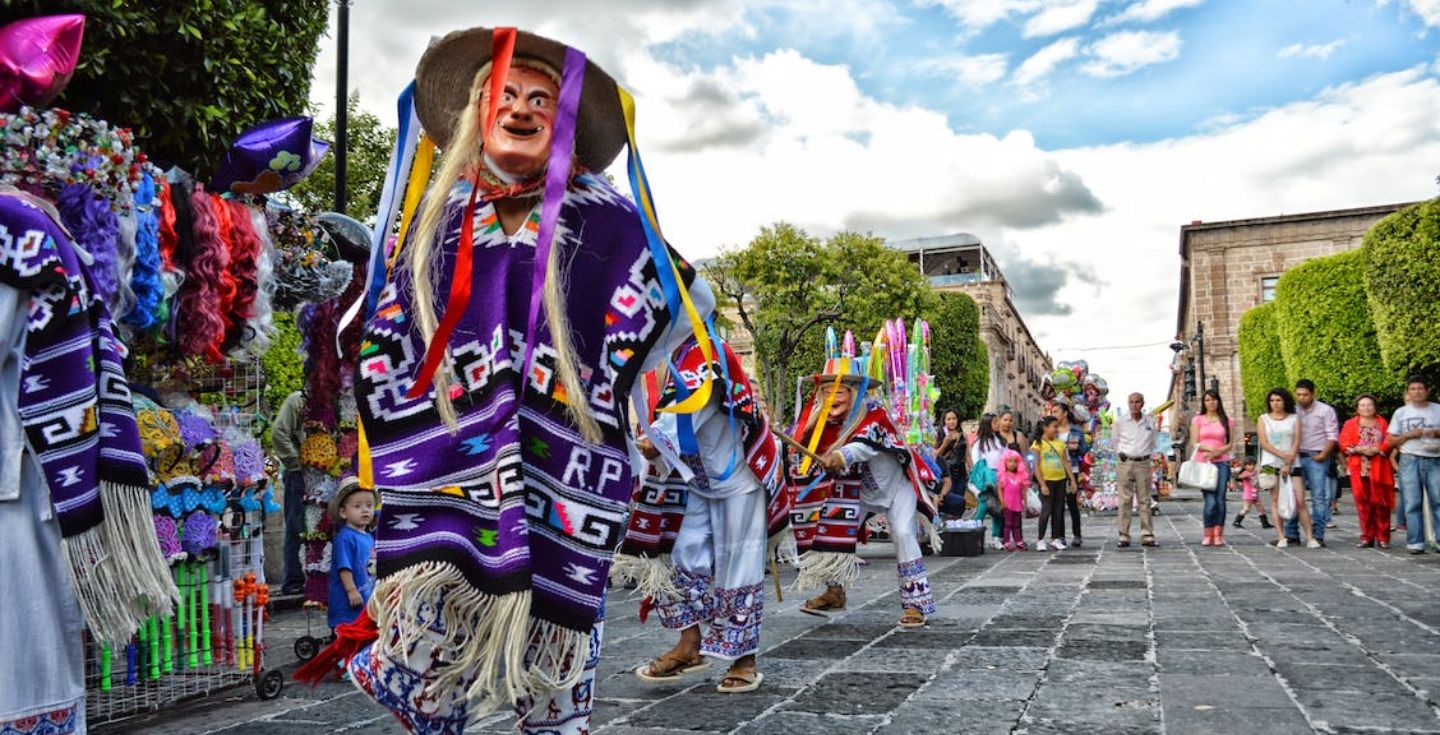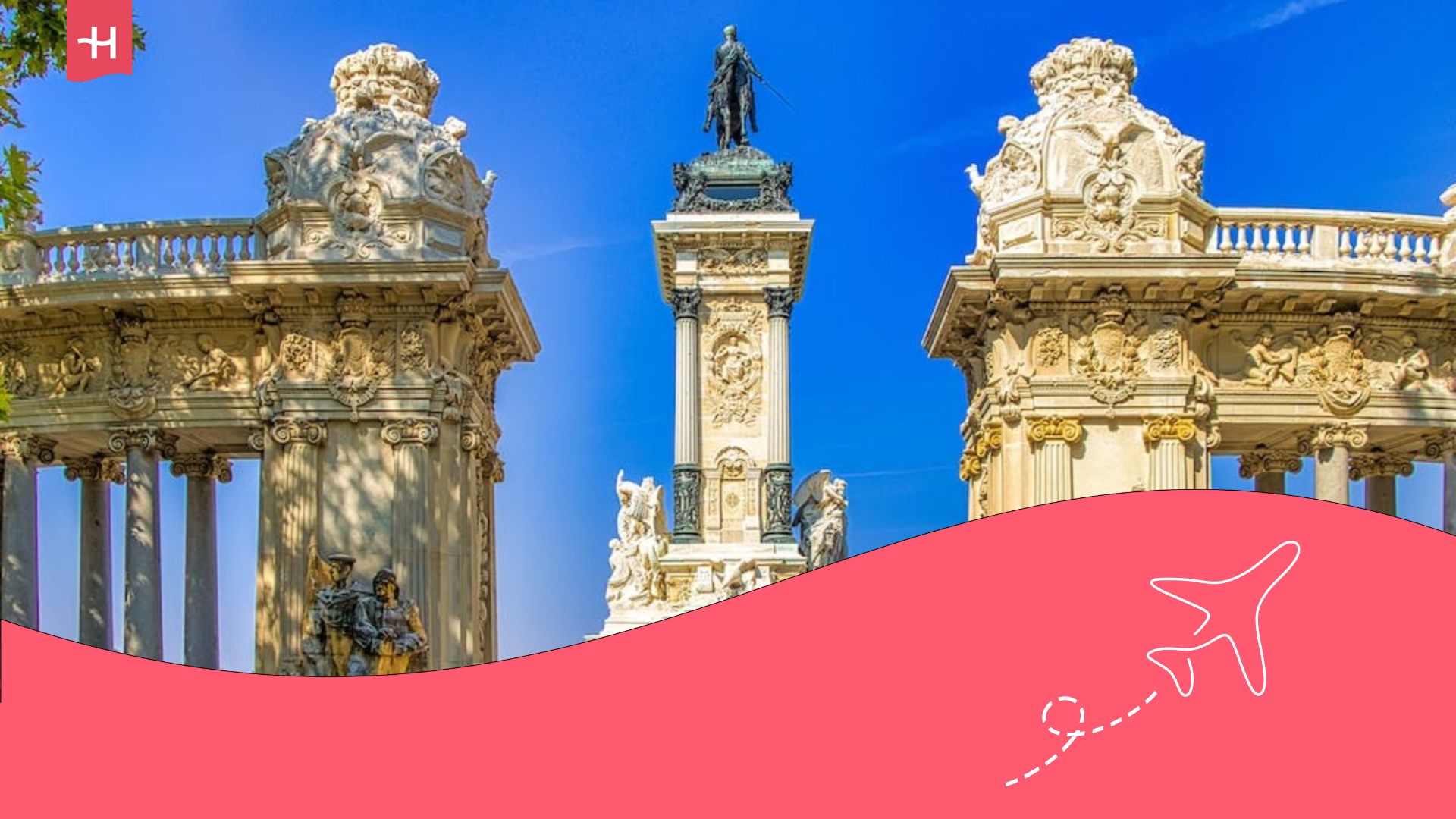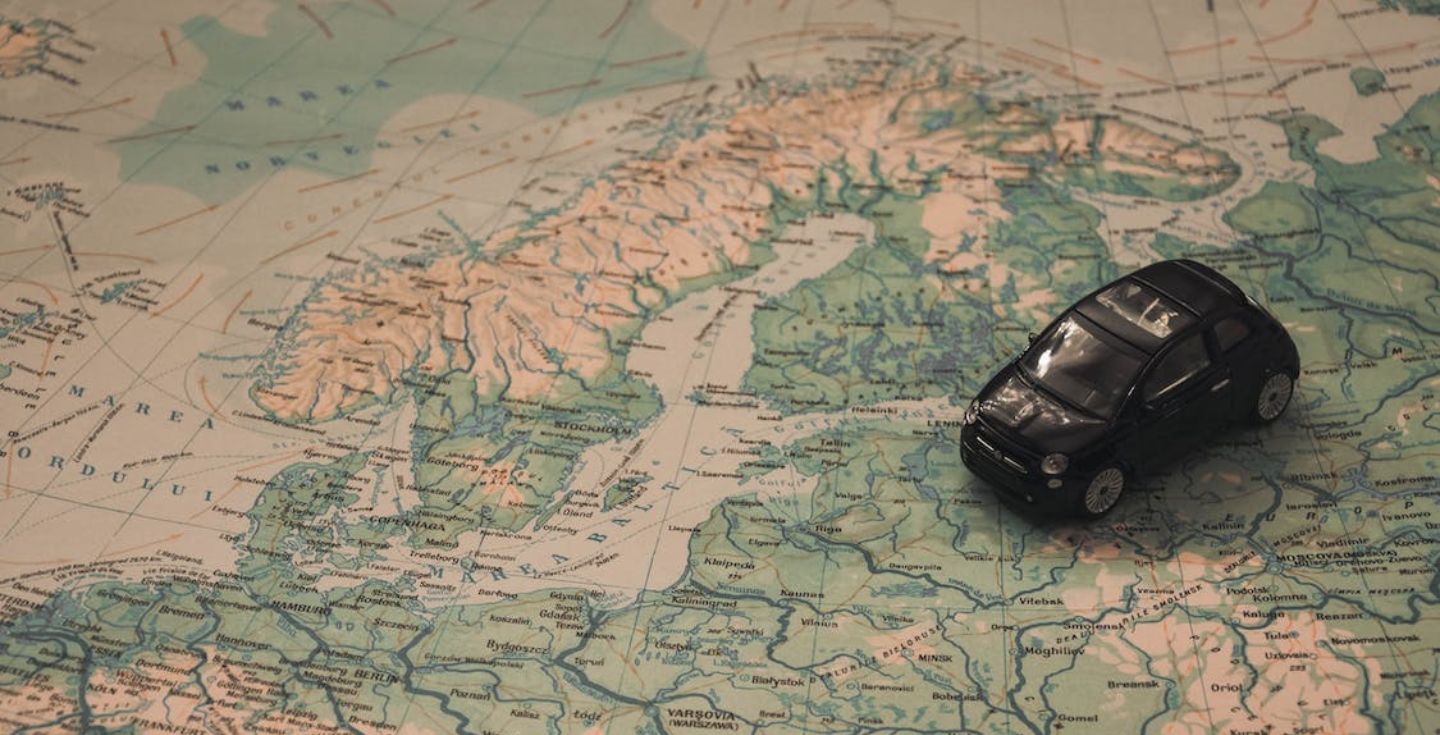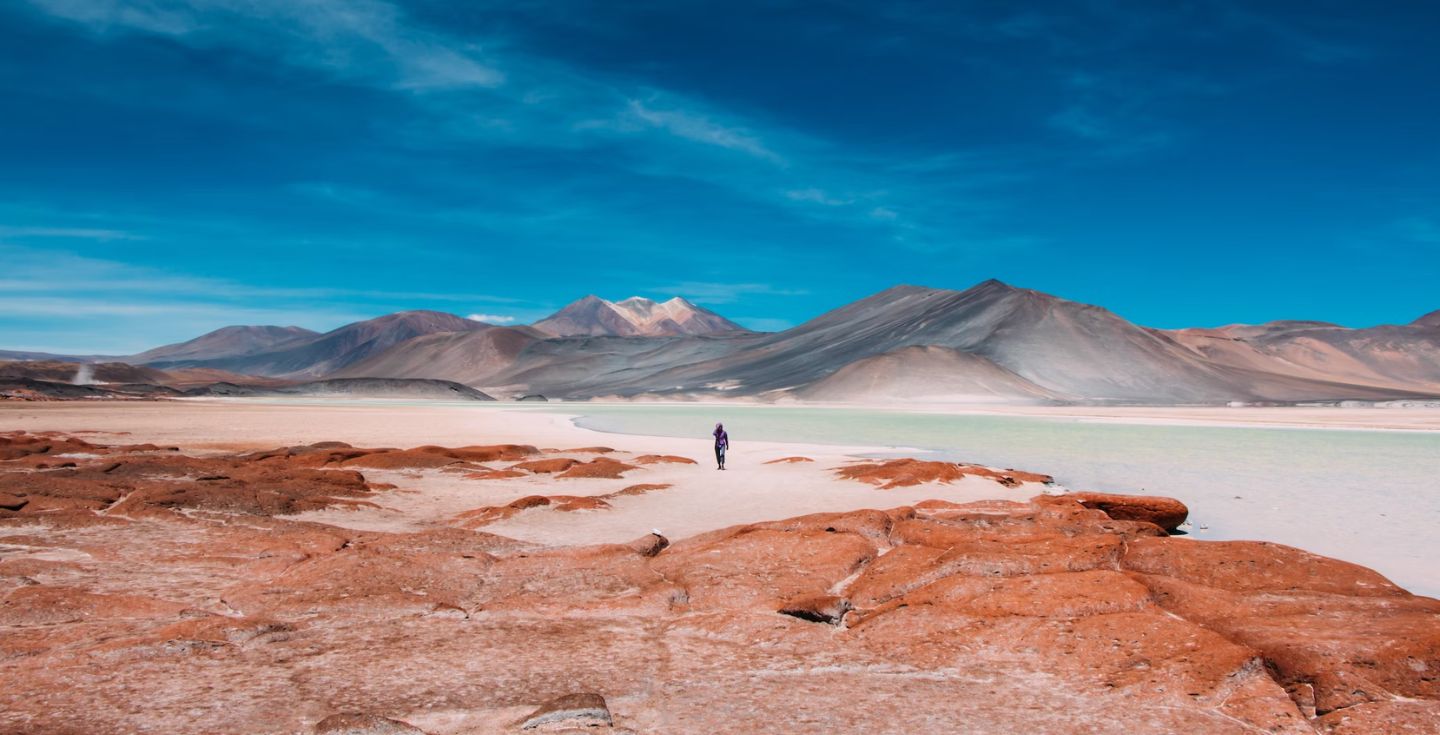Travel guide for Colombia: Tips and unmissable destinations
Read all the information you need to travel to Colombia and have a great and unforgettable experience!
Get ready to discover a vibrant and diverse country with natural beauty everywhere, exciting stories, and a warm culture. With our travel guide for Colombia, you will discover everything from the best beaches on the Caribbean coast to the most important cities to visit.
Also, we will give you recommendations about what to keep in mind when traveling to Colombia, information about the visa, security, and how to get there. We will even tell you how to get around Colombia, what to buy, tips to help you save some money on your adventure, and how to connect to the Internet. One way to do this is by getting a local Colombia SIM card. Another way is opting for an unlimited data travel eSIM.
What you should know about Colombia: General information
Colombia is a country located in the northwestern corner of South America, sharing borders with Venezuela, Brazil, Peru, Ecuador, and Panama. So, before starting our travel guide for Colombia, it is necessary to tell you about some relevant and necessary information for traveling:
- Weather: Colombia’s weather is as diverse as its geography, meaning you can experience a wide range of weather conditions during your trip. The temperatures will depend on the area in which you are because you will find temperatures ranging from -3° C to 46° C. We recommend checking the weather on Meteored to explore the weather according to the region.
- Spanish Language.
- Currency: Colombian peso (COP)
- Time Zone: COT (UTC−5)
Before continuing, it is important to mention that exchanging currencies in Colombia is a relatively simple process since the country has a network of exchange houses and banks that offer this service. Exchange houses and banks are the most common places to exchange currency because some have branches in international airports.
Banks are a safe and reliable option for exchanging currencies. They usually offer competitive exchange rates and guarantee the legitimacy of the transaction. However, exchange houses are found in tourist areas, shopping centers, and urban areas, also offering competitive rates and more flexible hours than banks.
ATMs are a convenient option to obtain Colombian pesos. However, keep in mind that ATMs may charge additional fees, and exchange rates may vary. Avoid exchanging your money on the street! This option can be risky and you would be vulnerable to scams.

What to keep in mind when traveling to Colombia
Traveling to Colombia is an exciting adventure, but like any other destination, there are certain aspects that you must take into account to have a safe and pleasant experience. So, pay attention to the following tips:
Visa
The process of obtaining a visa to travel to Colombia could vary depending on your nationality and the purpose of your visit. Before starting the process, check if your country of origin requires a visa to enter Colombia on the official website of the Ministry of Foreign Affairs, as there you will see much more up-to-date information.
The requirements to apply for a tourist visa to enter Colombia (short stay/90 days) are:
- Passport valid for at least 6 months upon entering Colombian territory.
- Process the duly completed visa application form.
- Copy of identity document, two passport-size photographs.
- Accommodation reservation or invitation letter.
- Prove financial solvency corresponding to the 6 months before the application that demonstrates income of no less than 10 monthly legal minimum wages.
- Travel policy or insurance.
- Tickets to enter and exit the country.
To apply for the visa, the people interested must go to the Colombian consulate or embassy closest to their residence. Currently, the processing time is 15 business days and has a cost of USD 136 (visa study USD 54 – visa obtaining USD 82).
| Countries that do not need a Visa for Colombia | |||
| Argentina | Peru | Mexico | United States |
| Brazil | Chile | Panama | Spain |
| Paraguay | Dominican Republic | Trinidad and Tobago | Norway |
| Uruguay | Venezuela | Netherlands | Bolivia |
| Honduras | Hungary | United Kingdom | Ecuador |
| Belgium | Italy | Russia | Germany |
| Canada | Jamaica | Sweden | Andorra |
| Guatemala | Japan | Switzerland | Bahamas |
| Guyana | Morocco | Turkey | |
If you want to consult the complete list of countries that do not need a visa to enter Colombia, check the link provided by the Foreign Ministry.
Security
As in any other country, it is important to take some safety precautions to avoid problems, for this reason, we present some recommendations for traveling to Colombia:
- Research the destinations you plan to visit: Know the safe areas and avoid areas where you may have security problems.
- Check the official travel recommendations issued by your country’s government, as these guidelines will provide you with up-to-date information on safety conditions in Colombia.
- Be cautious with your belongings: Keep your purse, backpack, and personal belongings protected in crowded places. Be careful with pickpocketers.
- Use reliable transportation: Use official taxis or transportation services recommended by your accommodation. If you use taxis, make sure they are safe and legitimate.
- Avoid walking at night in unknown areas, especially in poorly lit or low-traffic places.
- Keep your passport, credit cards, and other important documents in a safe place. Carry digital copies of your documents in case of loss.
- If you are traveling by road, find out about safe routes and avoid traveling at night.
- Respect local customs and rules of behavior.
- Avoid excessive alcohol consumption and moderate your behavior in nightlife.
By following these recommendations and using common sense, you will be able to enjoy a safe and pleasant trip to Colombia. And remember, it is essential to take out adequate travel insurance for your stay.
Culture
Colombia is a country full of unforgettable cultural experiences. Colombian culture is a fascinating mosaic of indigenous, European, and African influences, which is evident in the majestic pre-Columbian ruins, the vibrant colonial cities, its rich and varied gastronomy, the parties, festivals, carnivals, music, and art.
Next, we will tell you about Colombian culture and traditions:
- The traditional greeting in Colombia is a handshake. It is important to maintain eye contact and smile.
- Tips are not mandatory in Colombia, but they are appreciated. The maximum tip amount is 10% of the invoice price.
- Casual dress is acceptable in most situations in Colombia. However, dressing respectfully in religious places or at formal events is relevant.
- Alcohol is an important part of Colombian culture. However, we recommend drinking in moderation.
- Colombians are very respectful people. Try to be polite to others.
- The notion of time can become more flexible in Colombia. Meetings or events may start a little later than expected, so be patient and adjust your schedule.
- Avoid discussing sensitive political topics, as they can generate controversy. Instead, seek to learn local opinions respectfully.
- If you haggle in markets or stores, do so with kindness and respect for the seller. Haggling is common in Colombia, but keep a good attitude.
Internet connection
When traveling to Colombia, it is very important to know how to connect to the internet to keep in touch with your loved ones and be able to share the amazing experiences you have.
To travel to Colombia, you can contract the roaming service of your local operator or pocket Wifi, but these options can be very expensive. Local SIM cards, in Colombia, are not available for tourists, except Claro SIM cards that offer data plans.
If you are looking for a good quality connection, for accessible prices, we recommend you choose the Holafly eSIM Colombia card, with it you will have unlimited data and coverage in the main and most tourist places in Colombia. Before making your purchase, we recommend checking if your mobile phone is compatible with this technology. If you have any problems, contact customer service 24/7.
Best dates to travel to Colombia
The best time to travel to Colombia is in the dry season, from December to March and June to August. If you’re wondering about the peak season, it’s during the summer (June-August), when the weather is warm and sunny.
If you are looking to get to know Colombian culture in all its splendor, write down the following dates on your calendar:
- Manizales Fair (January): It is an annual event that celebrates the coffee heritage, showing the culture and tradition of the region. It combines various activities such as parades of floats decorated with flowers, concerts, bullfights, agricultural exhibitions, and cultural events.
- Barranquilla Carnival (February-March): This is one of the most emblematic events in Colombia and one of the largest carnivals in Latin America. For several days, the city is filled with music, dancing, colorful parades, and elaborate costumes representing different traditions and ethnic groups.
- Holy Week (April): Religious celebrations are held throughout the country, especially in Popayán and Mompox.
- Cartagena Independence Festival (July): It commemorates November 11, 1811, when Cartagena declared itself independent from Spain. The city is filled with colorful parades, music, dances, concerts, and cultural activities.
- Flower Fair (August): Held in Medellín, the event not only showcases an impressive display of flowers but also features musical concerts and seasonal activities. The Silleteros Parade is the highlight, showcasing the traditions and natural beauties of Colombia.
- Vallenato Festival (September): The purpose of this festival is to preserve and promote Vallenato music. The festival includes vallenato music competitions in different categories and is an opportunity to celebrate the country’s musical identity.
- Festival of Lights (December 7-8): Celebrated in the charming colonial town of Villa de Leyva, it consists of illuminating the streets and squares with thousands of candles and lanterns. During the festival, the town is plunged into darkness and transformed into a fairy tale with twinkling lights.
- Christmas and New Year (December): The festivities reflect the cultural diversity of the country. Families participate in the Novena de Aguinaldos, Colombian cities, and towns are dressed in spectacular Christmas lighting, there are exclusive seasonal dishes and musical celebrations throughout the country.
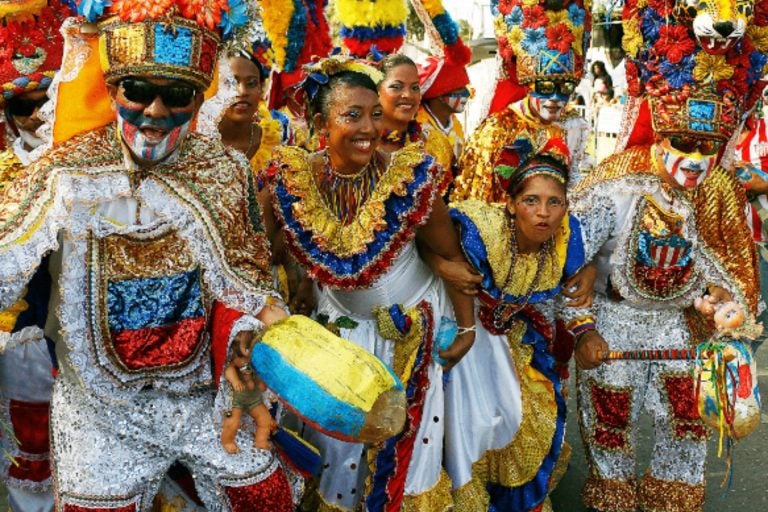
What is the cheapest month to travel to Colombia?
Generally, the cheapest months to travel to Colombia are the low season, which are May, June, August, September, and October. During these months, prices for flights, accommodation, food, and tourist activities are lower.
However, it is important to keep in mind that in some cities, these months are considered high season, such as August in Medellín, when the Flower Fair is celebrated. Therefore, it is advisable to plan your trip with anticipation of finding better deals.
How to get to Colombia?
The fastest and most comfortable way to get to Colombia is by plane. Flights from most countries in the world last between 8 and 12 hours.
If you want to save some money, you can travel to Colombia by boat or car. However, it is important to keep in mind that these trips may be longer and less comfortable.
Getting to Colombia by car
If you are in a neighboring country, such as Ecuador, Brazil, or Venezuela, it is possible to reach Colombia by land through border crossings, but be careful! It is important to check entry requirements and border conditions before planning a land trip.
Before considering this option, research the roads you are taking and make sure they are in good condition, and keep in mind that fines for traffic violations can be very high.
Getting to Colombia by plane
The best way to get to Colombia is by plane, through international flights. El Dorado International Airport in Bogotá is the main entry point to the country and one of the largest airports in Latin America.
There are also other important international airports in cities such as Medellín (José María Córdova International Airport), Cali (Alfonso Bonilla Aragón International Airport), and Cartagena (Rafael Núñez International Airport), among others.
- United States and Canada: You can find direct flights with airlines such as Avianca, United Airlines, Delta Air Lines, American Airlines, Spirit Airlines, Air Canada, Air Transat, and WestJet.
- Europe: If you are looking for direct flights, you will get options with Air Europa, Iberia, Avianca, Air France, KLM, Lufthansa and TAP Portugal.
- Latin America: To travel by direct flight, we recommend: Aeroméxico, Volaris, Viva Aerobus, Avianca, Copa Airlines, United Airlines, LATAM, American Airlines, Gol, Aerolíneas Argentinas.
- Asia: Direct flights from Asia to Colombia are scarce, but not impossible to obtain, as they are offered by airlines such as Turkish Airlines, Emirates, Qatar Airways, United Airlines, and American Airlines.
To find the best deals on flights, you can access the different comparison websites, such as Skyscanner.
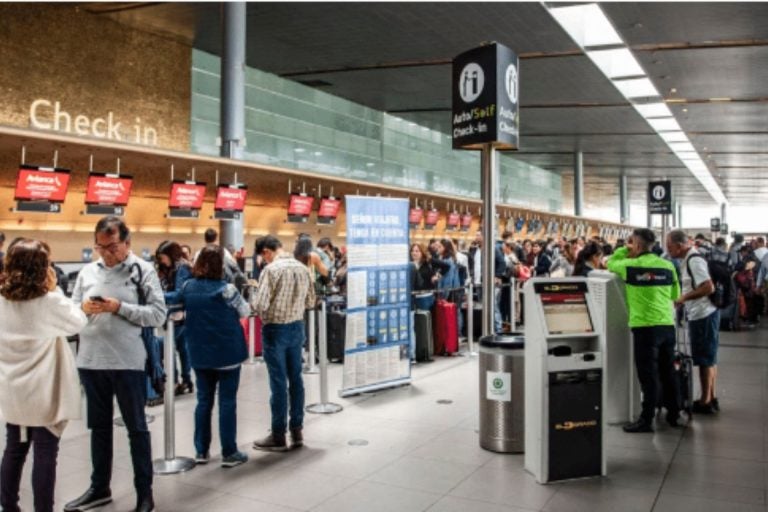
Go to Colombia by sea
If you are on a cruise ship or private vessel, some Colombian ports, such as Cartagena, can be entry destinations. However, most visitors arrive in Colombia by air due to the accessibility and speed it offers.
Several ferries connect Colombia with Panama, Costa Rica, and Venezuela.
Discover the exquisite Colombian gastronomy: best destinations to try it
We have a special section about Colombian gastronomy and the best destinations to try it.
- Bogotá: You will find everything from traditional dishes to signature cuisine. Don’t miss the opportunity to try ajiaco, Santafereño chocolate, changua, Santafereño tamale, and puchero.
- Medellín: The city of eternal spring offers dishes such as the tray paisa, mazamorra, calentao, sancocho, mongondo, church empanadas, custard, buñuelos and obleas.
- Cartagena: Try fresh ceviches, rice with coconut and seafood, egg arepa, Chucho cake, fried fish, garlic shrimp, posta negra, and patacón.
- Cali: Taste the chicken sancocho, the shampoos, the cholao, the arroz tollado, the aborrajados vallunos and the manjar blanco.
- Barranquilla: In this Caribbean city, try fried bocachico, mote de queso, butifarra, enyucado, chicharrón, fried foods, and rice with shrimp.
- Pasto: Taste the roast guinea pig (guinea pig), the baked pork, the fried pasture, the fried trout, the nariñense tamale, the quimbolito, the Chilean, and the paila ice cream.
- Amazon: If you visit this Amazon region, try exotic delicacies such as pirarucú, dried fish, catfish in sauce, mojojoy, Amazonian pineapple, copoazú cream, and casabe.
- Popayán: Taste pipián empanadas, veal, dripped potatoes, tortilla and arracacha cake, white cake, and peanut chili.
- Manizales: In the coffee region, enjoy the flavors of ancestral cuisine in dishes such as Tolimense tamale, buñuelos, tongue-in sauce, and agua panela with cheese.
- San Andrés: On this Caribbean Island, try rondón, fish balls, crab soup, crab’s backs and snail salad.
Top 10 best cities to visit in Colombia
Each city has its history, a unique personality, and diverse entertainment options that you will love. Let yourself be captivated by the magic of Colombia through its cities:
- Bogotá: The capital of Colombia is a cosmopolitan city full of history, art, and nightlife. Explore museums, visit the historic center of La Candelaria, climb Monserrate Hill, and enjoy the diverse gastronomic and cultural offerings.
- Medellín: It is a modern city surrounded by mountains. Explore Arví Park, the Antioquia Museum, Pueblito Paisa, Plaza Botero, El Castillo Museum, the Botanical Garden, and the Rafael Uribe Uribe Palace of Culture. Get an eSIM for Medellin with Holafly and stay connected to the internet.
- Cartagena: This coastal city is famous for its colonial charm and beaches. Stroll through the colorful streets of the historic center, and visit the San Felipe Castle, the Walled City, and the Clock Tower Monument.
- Barranquilla: Known for its carnival, it offers a mix of Caribbean and Afro-Colombian influences. Explore its beaches, the Plaza de la Paz, the Window to the World Monument, the Great Malecón del Río, and the Museum of the Caribbean.
- Villa de Leyva: This colonial city is a popular destination for history and nature lovers. Tour the Plaza Mayour, the Terracotta House, the Ain Karim Vineyard, and the Antonio Nariño House Museum.
- Manizales: Located in the coffee region, it is known for its panoramic views and its university atmosphere. Explore the Nevado del Ruiz, the Monument to the Colonizers, the Torre De Cypre 360°, the Recinto del Pensamiento, and the natural hot springs in Santa Rosa de Cabal.
- Guatapé: Known as the “town of the zócalos,” Guatapé is one of the most colorful places in the world. Climb the Peñol stone to admire the spectacular panoramic view of the reservoir, do water activities, and walk through its painted streets and the Plaza de los Zócalos.
- Bucaramanga: Explore the Chicamocha National Park and enjoy its nature, visit the Cultural Center of the East, Panachi, the Water Park, and the San Pio Park.
- Santa Marta: Located on the Caribbean coast, explore the Tayrona National Natural Park, the Lost City, the Mundo Marino Aquarium, the Quinta de San Pedro Alejandrino, and the Bolívar Park.
- Cali: The ‘Capital of Salsa’ offers a vibrant nightlife and energetic dance culture. Enjoy its food, its parks, and its happy atmosphere.

What are the best 10 beaches in Colombia?
Colombia has wide coastlines washed by the Atlantic Ocean and the Caribbean Sea, which means there are many beautiful beaches to explore. Here are the top 10 of our travel guide for Colombia:
- Barú Island: Playa Blanca is the jewel of Barú Island, as its white sands and crystal-clear waters create a postcard setting. It is perfect for relaxing, swimming, disconnecting, and watching dreamy sunsets.
- Tayrona National Natural Park: Within this park, you will find spectacular beaches such as Arrecifes, La Piscina, and Cabo San Juan. Its beaches surrounded by tropical jungle and mountains create an impressive setting.
- San Andrés: This Caribbean Island is famous for its white sand beaches, crystal clear waters, and vibrant marine life. San Luis Beach and Spratt Bight Beach are some of the most popular.
- Palma Island: It is an exotic and paradisiacal destination located in the Gulf of Morrosquillo. The beaches are practically virgin and offer a natural and relaxing environment where you can completely disconnect.
- Mucura Island: You will get idyllic beaches and a captivating natural environment, white sand beaches, crystal-clear turquoise waters, activities such as diving and snorkeling, and even delicious Caribbean cuisine.
- Playa de la Roca, Providencia: This small island offers spectacular beaches. Playa de la Roca is a magical place to relax and enjoy calm waters away from everyday life.
- Bahía Solano: In the Colombian Pacific, this virgin beach is part of a national park. It offers a unique experience surrounded by jungle and wildlife. In September, you can participate in whale watching.
- Playa de la Ensenada, Isla Fuerte: This lesser-known island offers white sand beaches and crystal clear waters, perfect for exploring the underwater world.
- Taganga Beach: Near Santa Marta, this beach is a popular spot for diving and snorkeling lovers. It offers a spectacular view of the bay.
- Gorgona National Natural Park: It houses ecosystems such as tropical rainforests and coral reefs. Suitable for diving and having moments of closeness with sharks, turtles, and manta rays; take walks through the forest, and between June and October, observe humpback whales.
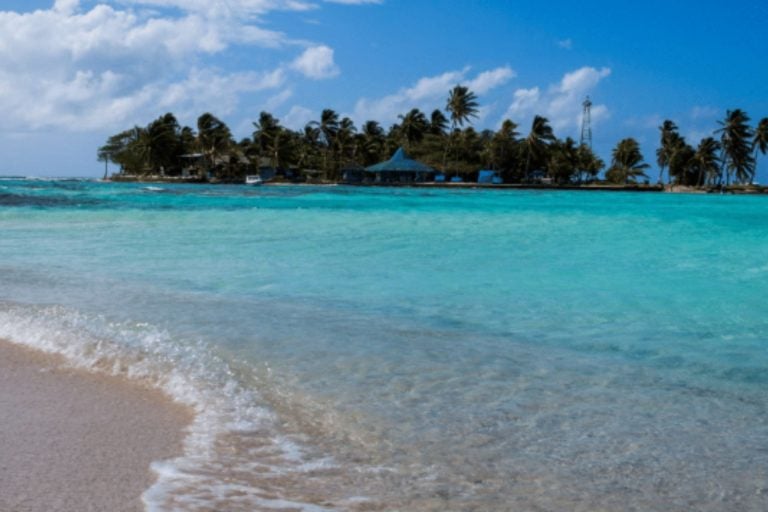
Best destinations for cultural tourism in Colombia
Every cultural destination in Colombia has something unique to offer. Below, you will find the top 10 best cultural destinations:
- Cartagena: This colonial city is a popular tourist destination that offers a mix of history, culture, and natural beauty. The city is home to a large number of historic buildings, including the Castillo de San Felipe de Barajas, the Cartagena Cathedral, and the Clock Tower.
- Santa Marta: This coastal city is home to the Lost City, an ancient pre-Columbian city that is one of the most popular tourist destinations in Colombia. The Lost City was built by the Tayrona civilization in the 8th century and was abandoned in the 16th century.
- San Agustín: This archaeological park is a UNESCO World Heritage Site that houses more than 300 pre-Columbian sculptures. The sculptures represent a wide variety of subjects, including humans, animals, plants, and mythological figures.
- Popayán: This colonial city is known as the White City for its white stucco houses. The city is home to a large number of historic buildings, including the Popayán Cathedral, the Archbishop’s Palace, and the Museum of Colonial Art.
- Mompox: This river city in the Colombian Caribbean is a place where time seems to have stopped. Its colonial architecture and quiet atmosphere are irresistible. Visit its different churches, the jazz park, and the Pijino swamp.
- Santa Fe de Antioquia: This colonial destination will make you feel like you are traveling back in time. Explore its cobblestone streets, its historic churches, the Western Suspension Bridge, and the Basilica or Cathedral.
- Zipaquirá: Here you will find the famous Salt Cathedral, an underground religious and architectural site carved into a salt mine. A unique experience for its spirituality and design!
- Bogotá: The Colombian capital is a cultural epicenter with a wide variety of museums, art galleries, theaters, and cultural centers. Visit the Gold Museum, the National Museum, and the La Candelaria neighborhood.
- Leticia: In the heart of the Colombian Amazon, Leticia is a unique destination to explore the indigenous culture and biodiversity of the region. Visit indigenous communities, explore the jungle, and connect with nature and the local ethnic group.
- San Jacinto, Bolívar: This small town is known for its rich cultural and musical tradition since drums and bagpipe music are an essential part of the daily life of its inhabitants. Here you will learn about the authenticity of Afro-Colombian culture.
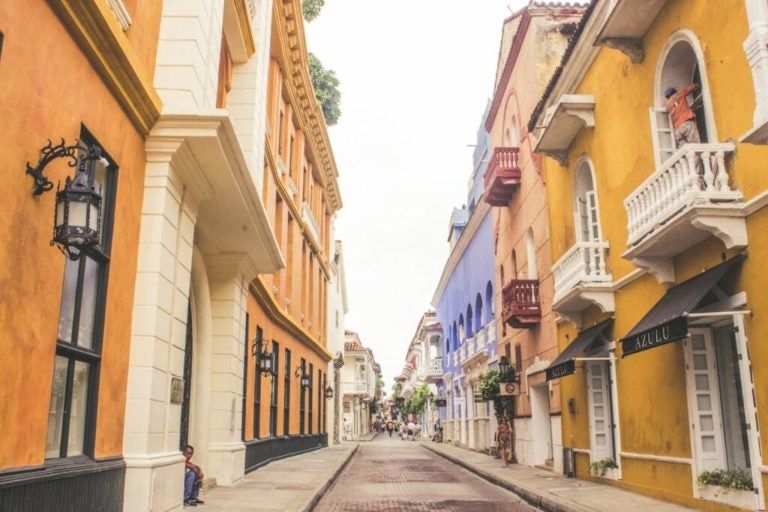
Where to practice ecotourism in Colombia?
Colombia is a country with a great diversity of ecosystems, which makes it an ideal destination for ecotourism. Here you will find some of the best:
- Tayrona National Natural Park: The park is a popular destination for activities such as hiking, camping, diving, and snorkeling. Explore its different trails and get ready to relax on its almost virgin beaches.
- Los Nevados National Natural Park: This national park is located in the Colombian Andes and is home to several snow-capped peaks, including Nevado del Ruiz, Nevado del Tolima, and Nevado del Huila. The park is a popular destination for activities such as hiking, mountaineering, and bird watching.
- Serranía de Chiribiquete National Natural Park: It is located in the Colombian Amazon and is one of the largest national parks in the world. The park is a popular destination for activities such as bird watching and photography.
- Sierra Nevada de Santa Marta: In addition to Tayrona Park, this mountain range is home to indigenous communities and landscapes ranging from beaches to perpetual snow.
- Otún Quimbaya Natural Reserve: Near Pereira, this reserve protects a great diversity of flora and fauna. It offers trails, waterfalls, and the opportunity to learn about Andean biodiversity.
- Cocora Valley: It is famous for being the home of the wax palms, the national tree of Colombia. These elegant palms, which can reach heights of up to 60 meters, create a unique and surreal landscape that will make you feel like you are in another world.
- Serranía de la Macarena: Known for the Caño Cristales, the river of five colors, this area is a natural paradise where you can explore rivers, waterfalls, and mountains. During certain months of the year, the water is filled with vibrant colors due to the presence of algae and aquatic plants, making it a unique and dazzling natural phenomenon.

Moving in Colombia: How does transportation work?
To make sure you have all the information you need for your trip, we are going to tell you a little about the transportation system, you will find a summary of how you can get around Colombia.
- Buses: They are the most popular means of transportation in Colombia, as they connect all the main cities and towns in the country. Buses are generally comfortable and affordable, and offer a variety of services, such as air conditioning, Wi-Fi service, and cafeteria service.
- Metro: The metro is an efficient and affordable transportation option in Medellín. We recommend it to move quickly and easily around the city, as it helps avoid traffic.
- Taxis: Taxis are generally safe and reliable, but they can be expensive, especially in large cities. It is possible to reserve them by phone, or you can also stop them on the street.
- Collective or Shared: In some areas, especially in towns and rural areas, you will find buses or shared vehicles that offer transportation for groups of people to specific destinations.
- Motorcycle Taxis: In rural areas and small towns, it is common to see motorcycle taxis as a form of local transportation.
- Transportation Apps: You will find shared transportation apps such as Uber, Indriver, DiDi and Cabify available.
What to buy in Colombia?
If you are looking to bring a little piece of Colombia to your city, in this section you can find the best souvenirs to buy.
- Coffee: Colombia is famous for its high-quality coffee; Buy roasted or ground coffee beans to take home and enjoy a cup of authentic Colombian coffee. We suggest brands such as Los Frailes, Juan Valdez, Amor Perfecto, and Café Quindío.
- Emeralds: Colombia is one of the main producers of emeralds in the world. If you are looking for jewelry with precious stones, Colombian emeralds are a winning option.
- Crafts: In the markets and craft stores, you will find a variety of handmade products, such as Wayuu backpacks, hammocks, vueltiaos hats, ruanas, ceramics, and colorful fabrics.
- Clothing and Fashion: Colombia has a growing fashion industry, with local designers creating unique garments. You can find modern clothing and accessories that reflect Colombian culture and style.
- Aguardiente and Rum: If you are a lover of alcoholic beverages, Colombian aguardiente and rum are popular options to take home and enjoy an authentic drink.
- Typical Sweets: Colombian sweets are delicious and unique. Look for options such as arequipe (dulce de leche), cocadas, sandwich (guava candy), panelitas de leche, and more.
- Art and Paintings: In galleries and art markets, you will find works of contemporary and traditional art that capture local creativity.
- Backpacks and Bags: Backpacks and other types of handmade bags are colorful and very unique. Leather goods are also a great way to bring a little piece of Colombia with you.
- Books and Literature: If you want to dive into Colombian literature, you can buy books by local authors and discover the country’s literary wealth.
- Miscellaneous: Buy typical refrigerator magnets, postcards, ceramic figurines, miniature Chivas (vehicles), keychains, and commemorative items.

Best places to shop in Colombia
This will depend on what you want or are looking to buy since in tourist areas you will always find places with great shopping offers.
- Zona Rosa – Bogotá: In the north of Bogotá, the Zona Rosa is known for its cosmopolitan atmosphere and its exclusive boutiques. Here you will find fashion, accessories, and a wide gastronomic offer.
- Cartagena Historic Center: The cobblestone streets of Cartagena’s historic center are full of shops with local crafts, jewelry, clothing, and traditional objects.
- La Candelaria Craft Center in Bogotá: In the heart of La Candelaria, this craft center offers authentic products such as textiles, ceramics, and hand-carved objects.
- Fifth Avenue of Cali: Known as La Quinta, this avenue is distinguished for its nightlife and fashion stores. It is a popular place to buy clothes, shoes and accessories.
- Shopping centers: Shopping centers are a good option for buying brand-name products and electronics. Some of the largest shopping centers in Colombia are located in Bogotá, Medellín, and Cali.
- Markets: Markets are a great way to find local products and crafts. Some of the most popular markets in Colombia include the Flea Market in Usaquén, Plaza de Mercado en Paloquemao (Bogotá), San Alejo Flea Markets (Bogotá), Plaza de Mercado Minorista (Medellín).
What is the cheapest thing to buy in Colombia?
To finish our travel guide for Colombia, we have some recommendations about what is the cheapest thing to buy in Colombia.
- Local Crafts: Markets and craft stores offer a wide range of products at affordable prices. You can find textiles, ceramics, jewelry, and hand-carved objects that reflect Colombian culture.
- Clothing and Footwear: Clothing and footwear in Colombia can be cheaper than in other countries. In local markets and stores, you can find clothing, shoes, and accessories at attractive prices.
- Leather Products: Colombia is known for its quality leather production. You can find bags, wallets, belts, and other leather products at competitive prices.
- Souvenirs: magnets, keychains, and decorative objects.
If you want to save a little more on your trip to Colombia, below you will find some tips to do so:
- Eat at local restaurants: Local restaurants are usually more affordable than tourist restaurants. You will get the so-called corrientazo starting at USD 3. It includes soup, dry food, juice, and sometimes a tinto or tintico (coffee).
- Use public transportation: Public transportation is a cheaper way to get around cities.
- Visit free national parks and museums: There are many free national parks and museums in Colombia.
- Buy seasonal products: Seasonal products are usually cheaper.
Frequent questions about traveling to Colombia
Colombia is a safe country to travel to, with a lower crime rate than many other countries. However, it’s important to take safety precautions, such as not walking alone at night, and avoiding remote areas.
Colombia has a tropical weather with warm temperatures throughout the year. The best time to travel to Colombia is during the dry season, which runs from December to March.
The cost of traveling to Colombia varies depending on the length of the trip, the type of accommodation, the style of travel, and the activities carried out. For a 7-day trip, you could need from USD 500 to USD 900, which includes accommodation, transportation, meals, and different activities; to this, you need to add the cost of the flights, which will depend on your city of origin.
Recommended vaccinations for traveling to Colombia include typhoid fever, yellow fever, and hepatitis A. It is important to consult with a doctor for more information about required vaccinations.
Clothing for traveling to Colombia should be comfortable and breathable. It is also important to pack clothes for different weather since it can vary depending on the region. We suggest packing a hat, sunglasses, sunscreen, and insect repellent in your backpack or suitcase.
We recommend booking your accommodation on apps such as Skyscanner, HotelTonight, Booking.com, Airbnb, Hotels.com and Kayak. Enter the website and search for hotels near your tourist area, since many of them usually have a website.
Colombian gastronomy is one of the most varied in the world, with indigenous, African, and European influences. Some of the most popular typical Colombian dishes include Tranta Paisa, Ajiaco, Tranta Marinara, and Sancocho de gallina.
Get an Internet connection with: the Holafly eSIM card, roaming from your operator, pocket Wi-Fi, and SIM cards. If you travel to more countries in Latin America, we recommend the best eSIM for South America. With it, you will get connections in 19 countries on the continent.





 Language
Language 


















 No results found
No results found





